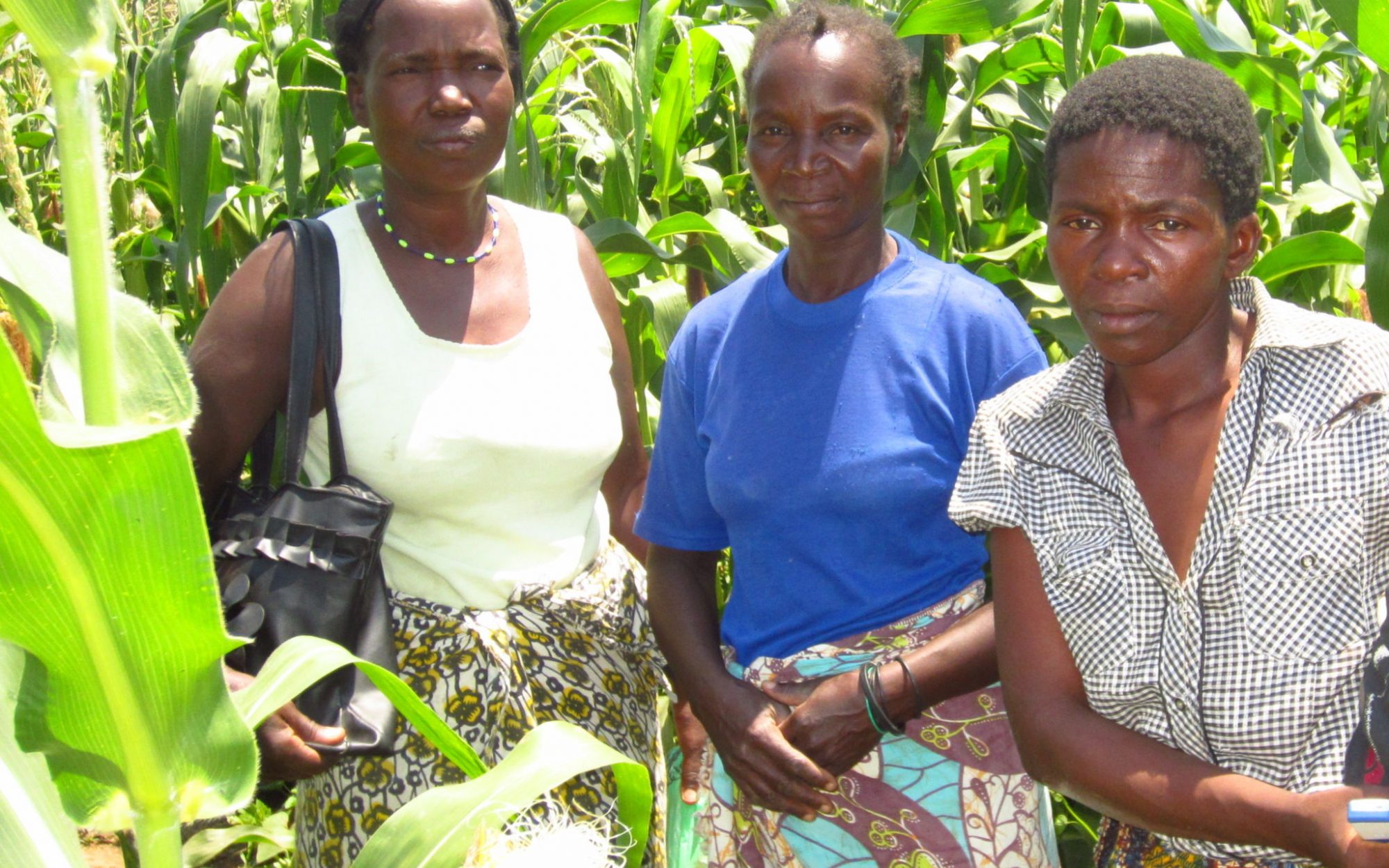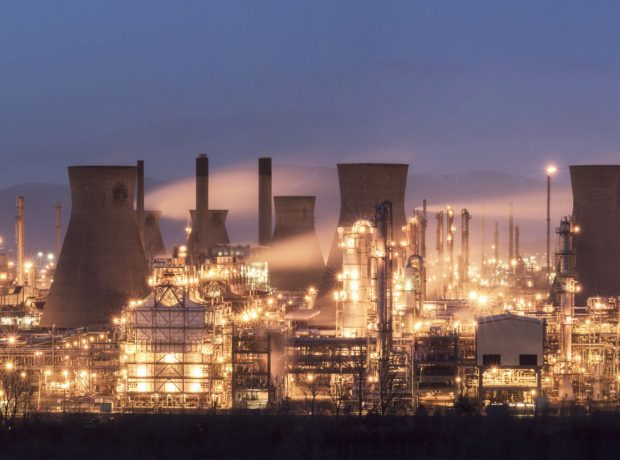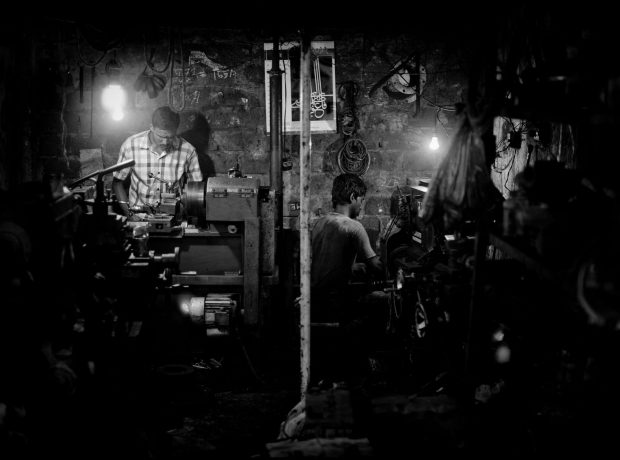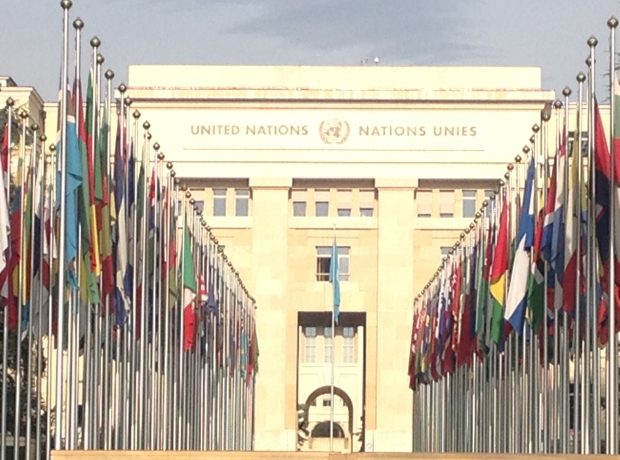Kendyl Salcito, co-founder of research and policy organisation NomoGaia, is a pioneer in business and human rights, spending the last nine years undertaking fieldwork. She tells James Harrison about her investigations, from gold mines in Indonesia to oil fields in Uganda, and shares her concern that good human rights work is still too rare in the business world.
What was it that first inspired you to look into the human rights impacts of multinational companies?
I was doing a Master’s course in journalism. For my dissertation I went to investigate an American-owned gold mine in Sulawesi, Indonesia. Newmont, the owner of the mine was accused of causing methylmercury poisoning among a fishing community on Buyat Bay.
As a journalism student, my aim was to write about the press reporting – a steady flow of news stories claimed the company was killing babies and causing illnesses, while a counter-current popped up occasionally, stating that there was absolutely nothing wrong with the bay, the community or the company.
When I went to Indonesia to investigate, I found an incredibly convoluted web of criss-crossing agendas and interests, all of which were manipulating the story to serve their own interests. To make an extremely long story short, there was no pollution in the bay, but Newmont had excluded a particular fishing community from receiving employment and benefits, at the request of the government.
This community became an easy target for an enterprising young activist. He told the community that he could guarantee them money and new houses if they agreed to go along with his story that the mine had poisoned the bay and destroyed their lives.
It was an election year, so the ministry of environment pushed an anti-corporate agenda. They fudged calculations of blood-mercury levels to make it appear that health impacts were occurring as a result of infinitesimally small amounts of mercury in the water (they cut out a denominator from the equation they used, so the health risks showed up at up to 10-fold what they actually were).
These are poor people living near a rich company, and they deserve to benefit.
I started digging around after I found the flawed methylmercury calculations. In a 12-hour interview with the activist that filed the lawsuits, he finally told me: “Look, I know there’s no mercury or arsenic poisoning, but these are poor people living near a rich company, and they deserve to benefit.”
The tragedy was they didn’t benefit. A multi-year lawsuit ultimately found the company completely innocent. In the meantime, the activist had relocated a large portion of the community to a different bay as part of the PR around the campaign. They were separated from their families, relocated to a place that had worse fishing conditions, and ultimately forgotten by everyone.
The whole story led me to believe that both companies and communities were suffering as a result of failed communication, which left a vacuum where corruption and manipulation could take hold.
The company didn’t pay attention to the grumblings of the bayside community. They also didn’t have a mechanism for community members to complain about discriminatory hiring. And they didn’t make it clear that it was the government which was stopping them from providing employment and other benefits.
I came to feel that if companies could operate with attention to human dignity, rather than just making sure they did nothing illegal, they could reduce their costs, increase and expand benefits for communities, and marginalize the opportunists who generate baseless scandals. On top of that, they would be positioned to identify risks before activists seized on them.
Where have you investigated corporate human rights impacts, and what challenges have you faced working in those locations?
Through NomoGaia I’ve worked or researched in 12 countries on four continents (Burma, Indonesia, Malawi, Tanzania, Uganda, Egypt, Sierra Leone, Ghana, Costa Rica, Belize, Bolivia, and Chile).
NomoGaia has the benefit of picking where we work, since we’re privately funded by small donors and not hired by companies, so we’ve tried to pick places where our findings can be directly relevant to an operation and also useful for operations in neighbouring countries.
We picked a uranium mine in northern Malawi because it represented the first major industrial investment in a rural part of an African country where HIV rates were above “endemic” levels (“endemic” is usually defined as 5% prevalence but in 2009 when we started working in Malawi, rates in the north were close to 16%).
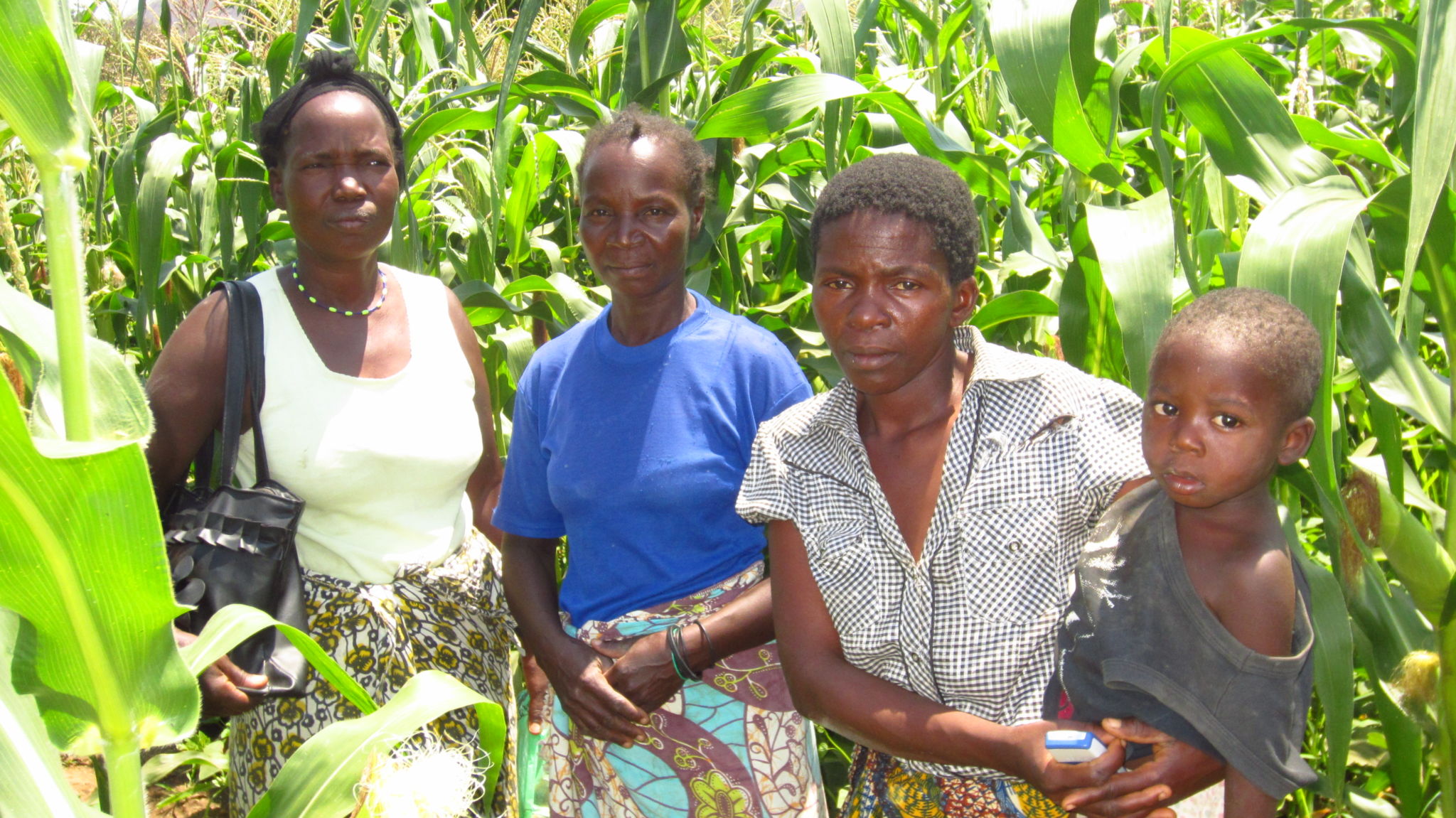
“These are members of a farm co-op developed to supply produce to the uranium mine. It’s quite lucrative (although there have been instances of corruption, where the farmers were getting short-changed by a middle man). It’s one of the true positive developments by the mine and also illustrative of the importance of a functional grievance mechanism that would enable people to bring the graft to the company’s attention.”
We picked a tree farm in southern Tanzania because sub-Saharan Africa has seen an agricultural boom, and we were concerned that multinational agricultural companies didn’t fully understand the complexities of operating in regions with no history of large-scale agriculture (that was true in Tanzania and it has also proven true in my colleague’s research into Palm Oil in Liberia).
In these kinds of locations, companies receive land leases at heavily discounted rates from African governments encouraging foreign investment. The companies think they’ve invested in a cheap operation. But there is such a lack of existing infrastructure in these places that unforeseen costs pile up, and inexperienced operators rarely have the cash on hand to operate ethically in the years before their operations start producing profits.
For the pine plantation we were assessing in Tanzania, it takes more than a decade for profits to start accruing. Operators don’t foresee the costs of addressing malaria, or tuberculosis, or HIV, or waterborne diseases, in a workforce that doesn’t have access to healthcare.
They don’t foresee the costs of providing protective gear to a staff that might not own their own boots. And the soil conditions are so highly variable that fertilizers and pesticides can become both costly to invest in and hazardous to store and use.
Basically, “cheap African land” is like the Ryanair of foreign investing – the ticket price isn’t what you’re actually going to pay, and if you don’t have the cash on hand to manage, you’re in for unpleasant surprises.
What was your most challenging impact assessment of a corporate project?
The hardest human rights impact assessments (HRIAs) to conduct are in places where mistrust has already been established. Those are the places where you spend incredibly lonely nights, because people aren’t ready to speak to you, or because a police presence makes it impossible for people to talk.
When I was doing early-stage fieldwork at Tullow Oil’s Uganda operations, I was put under house arrest at the local parish.
The Ugandan government has been extremely possessive of, and secretive about, oilfields. Local non-governmental organisations (NGOs) face beatings and arrests, whereas foreigners just get politely cordoned off. And that is what happened to me.
Although government representatives in Kampala informally authorised me to travel to oil regions, no one had notified the security personnel who would monitor my arrival there. The parish was one of the cleanest places I’ve ever stayed – I can’t remember slaying any malarial mosquitoes, squishing any unidentified creatures underfoot on my way to my sleeping mat (there’s almost never electricity where I sleep) or fearing that cattle would ram my tent (which actually did happen a bit further south on that same trip). But it was so devastatingly quiet.
I lobbied to be let outside to watch a local football match being played, and I requested to go for morning runs, which were granted most days, just so I could stay visible.
For two days, I spoke to no one but my translator and the local priest. But there was some benefit to the house arrest, because the priest got a very good sense of what I was trying to learn from local residents, so he started summoning catechists [teachers of Catholic principles] from all the neighbouring communities, who could ostensibly be at the parish for religious reasons, but who also spent a great deal of time telling me stories of their communities’ fears of and interactions with oil and gas development in the area.
He also brought local women by, who would talk to me about how the drought affected their crops and how land pressures from the new oil speculation made it hard for them to replant.
One woman’s husband was weaving a fishing net as she spoke to me about how fishing was now illegal.
After I talked to her, I triangulated the story with a local government official and a couple of other fishermen. It turns out that a new access road for oil exploration increased competition for fishing so substantially (with large-scale fishermen coming from inland) that fish stocks plummeted.
Also, Tullow’s offshore exploration involved bright lights that attracted small fish to the water’s surface. Fishermen took advantage of this easy prey and decimated fish stocks (the small fish were too young to have started reproducing). And so the government implemented a flat-out ban on fishing. People who survived on fishing were left with no choice but to break the law. That woman, with her four children, was technically a criminal for keeping her family fed. Tullow wasn’t responsible for the ban, but this was an inadvertent impact of its operations.

“Annetta with her 4 children. She explained to me about how fishing became ‘illegal’ and the challenges of scraping together a living under a fishing ban, while Tullow was exploring for oil wealth in Buliisa lands.”
I also found out that Tullow had acquired exploration licenses over lands and conducted 3D seismic surveys across the area. The land traditionally belonged to residents but “legally” did not.
Recognising the disparity between traditional and formal tenure, the government has rules about compensation for “land use.” The regional government sets land and crop compensation rates, but the rates never equal market values for crops or sufficiently account for the multiple years of value that, for example, a fruit tree or a mature cassava plant will provide.
People couldn’t afford to replant, and since they didn’t have formal ownership of the land they previously used, they weren’t provided compensation that would enable them to acquire new land.
The company also didn’t understand the reach of the impacts they were having. They hired a local NGO to identify residents who would be affected by 3D seismic surveys, but they only collected information on crops and structures (again, in accordance with Ugandan law) – not rangeland for cattle, access routes to watering spots, or fallow land that would be needed by the time surveys were completed.
On top of that, they compensated men, rather than women, which residents (and the parish leaders) linked to an array of bad behaviours, from increased drunkenness, violence and theft, to broken marriages.
In cases where divorce occurred, women raising families were left without crops or cash, and placed in precarious situations.

“Tullow workers doing two-dimensional seismic surveys. These are much less impactful than the 3D surveys that were the source of so many complaints. But the workers here are not from Buliisa, where the surveys are taking place. This is a source of tension for locals who need jobs.”
Tullow fielded something like 1,200 grievances by the time they set up a grievance procedure. Compounding the challenge, wealthy land speculators from Kampala, who had access to personnel within the lands ministry, secured formal titles to lands that were historically tribal, grossly increasing pressures on land while also inflating property values.
Because there were so many competing interests at stake, the Ugandan government became directly involved. The Ugandan military accompanied land surveyors in the land acquisition process to clear space for oil exploration and development activities, threatening force against anyone who dissented.
How did the company react to your findings?
I had a pretty complex back-and-forth with Tullow over this assessment. Initially they held strongly to the position that they were acting lawfully.
At the same time, though, they hired consultants to reassess their land usage and crop damage, ultimately: establishing a proper grievance log for identifying impacted individuals and families; developing a meaningful understanding of social dynamics; and massively increasing their compensation package.
They also hired a private security contractor, G4S, to reduce their reliance on and engagement with state military forces.
I haven’t been back to Uganda, and Tullow hasn’t moved beyond exploration, since 2012, but I met with a strong team of Tullow environmental and social managers in London in 2014, and updated my findings based on the upgrades to their policies, practices, contracts and efforts towards human rights. If and when they move into production, I hope to go back.
What are your thoughts on the future for assessing the human rights impacts of corporate projects?
Well to some extent I’ve put HRIAs on the back burner. At NomoGaia, we’ve established a pretty strong methodology for conducting them and published a fair number online. I think that if a company wants to conduct an HRIA, it wouldn’t have trouble contacting us and asking for help, or commissioning an HRIA from consultants (which we are not) and validating whether it’s any good based on what we and others have made public.
Part of the holistic nature of HRIA is attention to both the positive and negative impacts of corporate operations. Evaluating both takes a great deal of time, as does formulating detailed recommendations that are concrete enough to be directly implemented.
The time investment is therefore very great, and I’m not sure NomoGaia really needs to be putting our limited resources towards these processes that have now been piloted repeatedly.
NomoGaia is interested in making companies cognizant of and accountable for their human rights impacts. It was out of recognition that corporate investments inherently do bring some benefits, along with adverse impacts, that we focused on both.
We wanted companies to be commissioning HRIAs on their own, not just waiting for activists to generate negative campaigns, and that’s why we were careful to take stock of all the positive impacts of foreign direct investment. But it’s not clear that the positive reinforcement was effective.
HRIAs that I’ve done for companies outside of NomoGaia (i.e. as a consultant) have been pretty disappointingly misused – one company ignored my findings but wrote my recommendations into its annual report as if it had actually carried out those changes.
Another company has sat on my findings for roughly a year, claiming to have identified factual errors but refusing to tell me what they are. They contractually committed to publishing the report, but it’s pretty clear they won’t do it.
So my new sense is that, if companies are going to bury these reports anyway, why invest time and resources from NomoGaia, which is a non-profit organisation with limited funds, to identify positive impacts?
The only motivator for a non-public HRIA is whether a predicted risk becomes a costly reality. These costs matter to operations, so I’d like to demonstrate that human rights risk assessment (HRRA) can be relatively cheap and quick to carry out (as long as the operation is small), can identify big-ticket risks, and can save a company money if it takes the findings seriously.
The advantage to this approach is that it saves NomoGaia time and resources. The disadvantage is that we really enjoy engaging in-depth with companies and helping them develop solutions over time, which isn’t really an option with HRRA.
Also, we’re broadening our focus to look at the financial institutions that underwrite corporate operations.
Banks and lenders have no experience with human rights and generally they are staffed by people with no field background. They’re not equipped to see the human rights risks tied to their investments, and they also make thousands of investments in a year.
I think we need to make it easy for them to flag operations as high-risk. Then we need to give them options for evaluating how to proceed, either by pursuing more information through human rights due diligence and working with borrowers to improve practices, or by walking away from investments that present human rights risks that are too severe to manage.
The risk assessment methodology we are developing is partly for them, but I’m also working on a screening process so they can identify investments that merit risk assessment. The screen is incredibly basic – I’ve aggregated human rights risk rankings from about three dozen of the leading global human rights indexes and used them to identify countries, industries and specific investments that are inherently risky, based on contextual conditions. (It’s in beta here – and if readers want to comment, that would be awesome!)
What do you think of all the Human Rights Due Diligence that is going on around the world as a result of the UN’s Guiding Principles on Business and Human Rights?
This is a tough one. Human rights due diligence (HRDD) has been the sole focus of my work for nine years now, and I don’t think that’s true for very many people, even within the business and human rights space.
I had a lot of optimism early on, as companies were adopting NomoGaia’s findings, even if reluctantly, and changes were visible on the ground. But I’ve found that it’s a lot easier to affect change on the ground at an individual operation than it is to integrate HRDD into a corporate culture. There are lots of examples from different sectors to show the problems and pitfalls.
The extractive sectors suffered a major financial downturn in recent years, and I watched human rights drop from the agendas of many major mining and petroleum companies. Equally concerning, I watched some of those companies’ human rights discourse remain the same while their commitment to actually implementing their policies and practices dried up.
In other sectors, companies have clung very strongly to protocols they developed in response to past industry problems and subsumed the language of HRDD into those processes, without actually internalizing the differences.
Manufacturing companies are clinging to their labour rights approaches and renaming them “human rights”. For instance, at a meeting hosted by the US Department of State in 2015, the Walt Disney Corporation made a presentation about its commitments to human rights and described an array of labour standards and audits it had implemented.
I asked whether its human rights policy incorporated any potential environmental impacts of its manufacturing facilities. I was told that the environment isn’t part of human rights.*
And agriculture companies are clinging to land rights approaches and renaming them as “human rights approaches”.
A recent human rights risk assessment NomoGaia carried out on a palm oil operation in Liberia found that the company had begun effectively managing land acquisition disputes. But it was grossly underpaying a subcontracted workforce and subjecting them to unfavourable and potentially unsafe working conditions.
The company pointed to its Corporate Social Responsibility (CSR) report and membership of the Roundtable on Sustainable Palm Oil to dismiss our findings, but neither of those protocols directly address issues of workforce welfare.
I fear we are reaching a moment where human rights due diligence has been so weakly defined that companies are using the term to mean whatever they want it to mean and diluting its value. HRDD is supposed to be a rights-driven process for evaluating companies and operations.
I see only a few examples where human rights is a driver for change within a company.
Even where a commitment to rights is internalized by a company, I have rarely seen it adopted as an ethos for self-evaluation. In other words, companies aren’t using human rights frameworks to analyse or change their business practices.
Also, I know that companies have successfully pressured a number of practitioners to modify their methodologies to meet corporate terms of reference – they have made it impossible for assessors to engage with rights-holders, or they have eliminated fieldwork, or they have restricted the scope to a single right or single sub-population.
I’ve encountered these demands in my consulting, so I don’t fault practitioners for complying with them. But I think it has been easier for me to push back against them by standing firmly to a methodological process that is tested, validated, peer reviewed and publicly available.
Also, I don’t have a ton of skin in the consulting game, since I invest most of my time in NomoGaia work, not consulting work.
There are certainly some incredibly dodgy and disingenuous HRIA “methodologies” out there, though. Large environmental consulting firms are claiming to have HRIA capacity, which seems to entail sending a young consultant out with a clipboard and the Universal Declaration of Human Rights to make guesses about how rights interact with a project.
When you see a “human rights” chapter in an Environmental and Social Impact Assessment that’s five pages long, you know you’re looking at the total absence of expertise and methodological rigor.
What would you do to make that practice better?
I would make HRDD public. Companies that say they adhere to the UN Guiding Principles (UNGPs) are claiming that they can “know and show” their impacts. If they know things they don’t publish, it’s time for them to show it.
For instance, the US has required companies operating in Myanmar to report on their human rights due diligence processes.
Coca-Cola published a beautiful protocol for vetting human rights risks – if they have implemented it, what did they find?
In their private reports to the US Government, they are supposed to be reporting on the risks they have identified and the mitigation measures they have implemented. Why should this be secret? Shouldn’t the Burmese rights-holders be notified of the risks they face and the efforts that US companies are making to prevent them?
Public reporting of the HRDD companies are carrying out would swiftly differentiate the true leaders from the laggards, while also making available a much broader array of HRDD processes that companies and the public could evaluate for adequacy.
The UNGPs are five years old now. The reality is that there is no consensus on what level of diligence is “due” at a management or operational level. This urgently needs to change.
* Disney actually has robust environmental monitoring protocols, the problem is that they’re entirely divorced from its human rights policies.
MORE:
Human rights and business: Is the United Nations helping?
Can the purchasing power of public authorities help solve supply chain human rights abuses?
